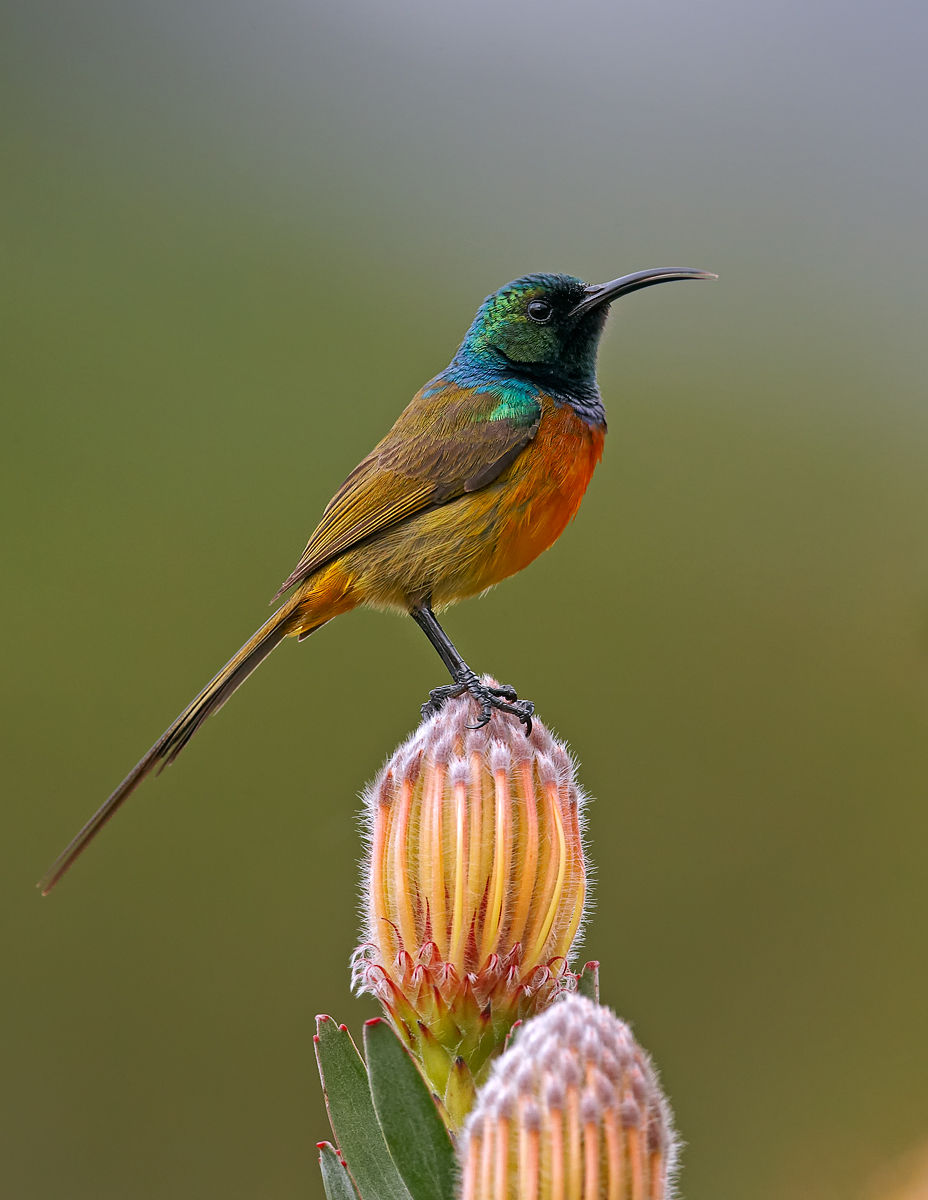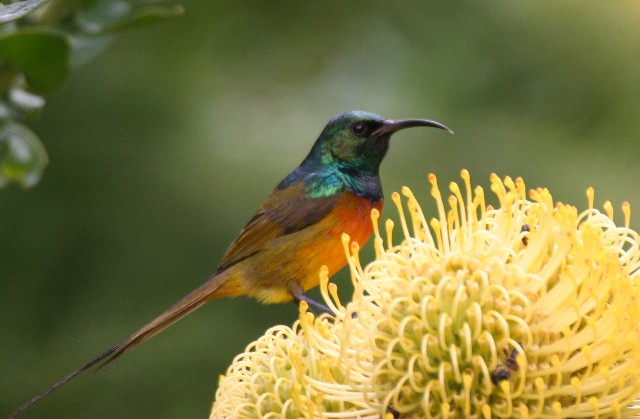
Anthobaphes violacea
SUBFAMILY
Nectariniinae
TAXONOMY
Certhia violacea Linnaeus, 1766, Cape of Good Hope, South
Africa.
OTHER COMMON NAMES
English: Violet-headed sunbird, wedge-tailed sunbird; French:
Souimanga orangй; German: Goldbrust-Nektarvogel: Spanish:
Nectarina de Pecho Anaranjado.
PHYSICAL CHARACTERISTICS
Male 5.7–6.5 in (14.5–16.5 cm), female 4.9–5.3 in (12.5–13.5
cm); male 0.32–0.4 oz (9–11.3 g), female 0.3–0.34 oz (8.6–9.7
g). Head metallic green with brown upperparts, orange breast,
and blue band across base of throat.
DISTRIBUTION
West Cape Province to Cape Town, South Africa.
HABITAT
Restricted to the fynbos of South Africa, where found in heathlands
and protea stands, but also occurs in parks and gardens.
BEHAVIOR
Found singly or in pairs during breeding season, but congregates
in flocks of up to 100 birds in the nonbreeding period.
Migrates from lower to higher altitudes during the southern
summer in search of flowering plants. Tame.
FEEDING ECOLOGY AND DIET
Closely associated with Erica heaths, taking their nectar by
probing into florets while clinging to stems. Also feeds on insects,
often taking them in the air during spectacular forays
from perches, and on spiders.
REPRODUCTIVE BIOLOGY
Timing of breeding linked to flowering by Erica heaths with
peak activity in May through August. Males defend territories
aggressively, attacking and chasing intruders. Nest unusual for
a sunbird as is ball-shaped and placed in bush and not suspended.
Only female builds, using rootlets, leaves from heaths,
twigs and grass, with cobwebs as adhesive. One or two eggs,
mostly white with brown markings, hatch two weeks after being
laid. Both sexes feed young but female does two-thirds of
the work. After fledging, parents tend young for three weeks.
CONSERVATION STATUS
Not threatened; common in appropriate habitat. Threatened
by urbanization, agricultural developments, and fires.
SIGNIFICANCE TO HUMANS
None known apart from role in pollinating proteas, some of
which are sold commercially, and heaths.
Other popular Animals
Photo Gallery of - Orange-breasted sunbird




 Animalia Life
Animalia Life